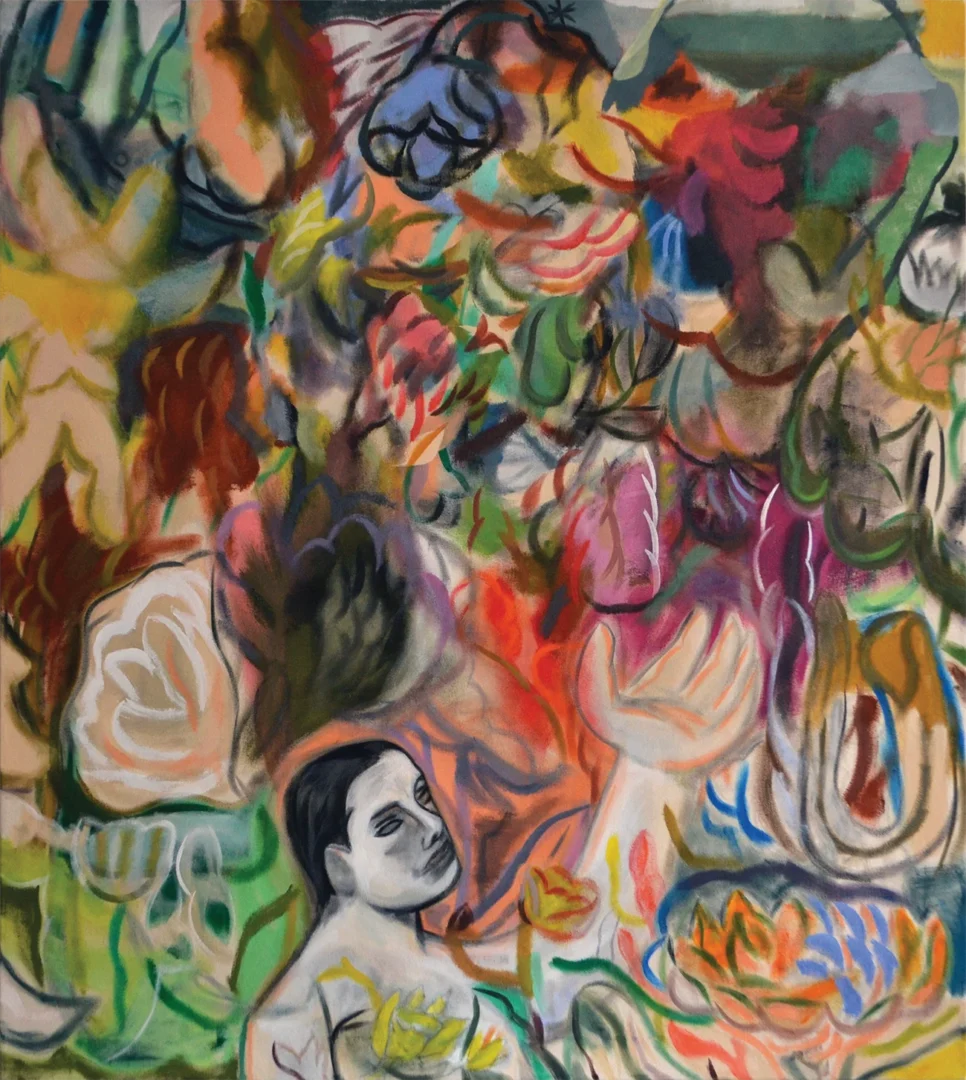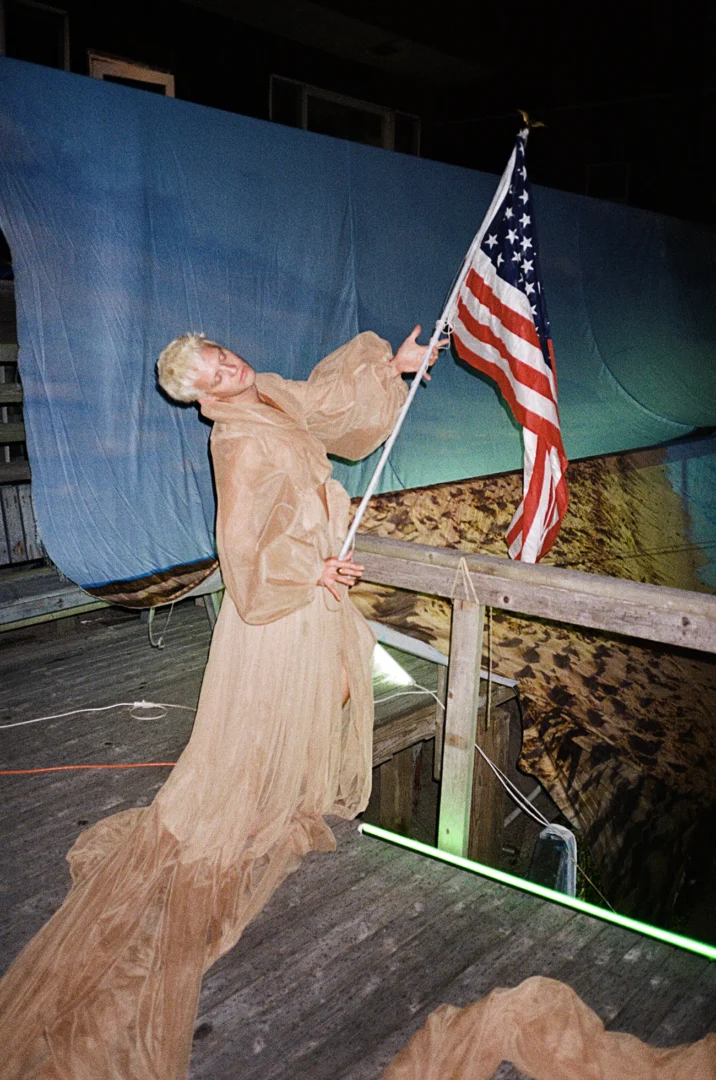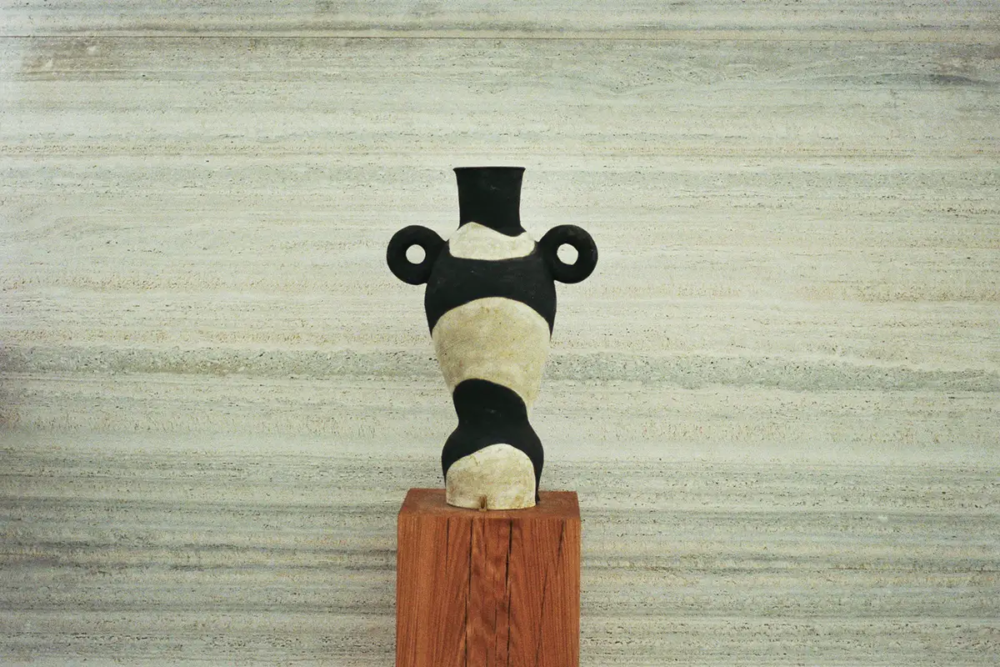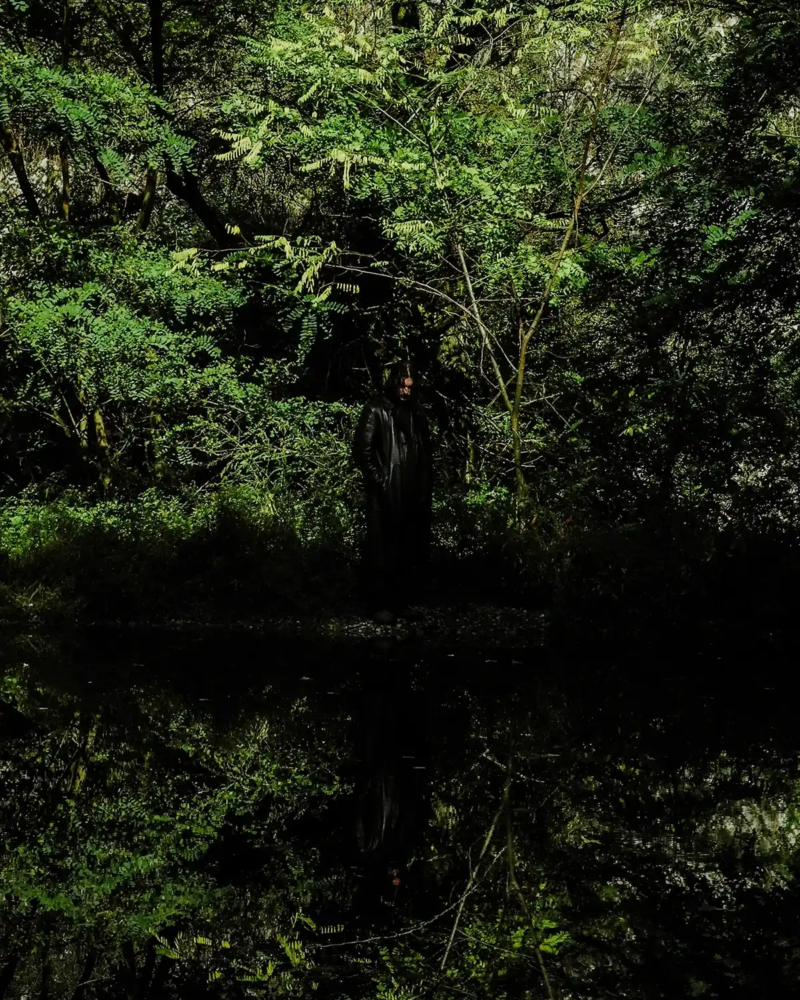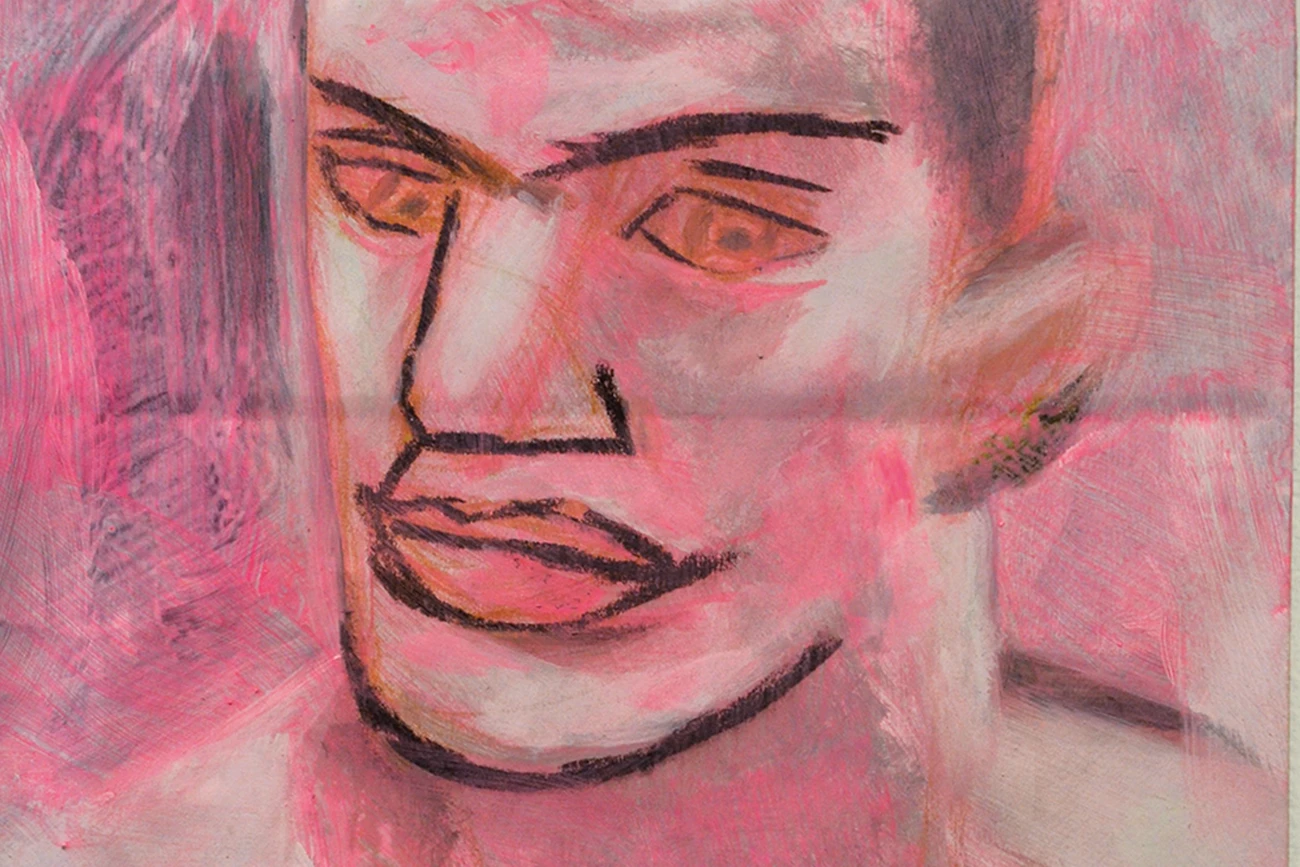
Fire Island: America’s gay community utopia has changed
New York’s gay mecca used to be only for the community – now straight families are undermining the dream. An interview with Slava Mogutin and Gio Black Peter
Gio Black Peter and Slava Moguitn on the spirit of Fire Island
«Went to the beach, brought my sketchbook, and met somebody. I was getting my dick sucked five minutes later. Then doing sketches of this person. Now we’re friends. That’s a story that couldn’t happen anywhere». Gio Black Peter sums up the spirit of Fire Island, a strip of land in the Atlantic Ocean 3.9 miles off the South Shore of Long Island. Gio Black Peter is one of the New York artists that have spent their summers there. Thousands of queer people born in the last hundred years and living in the Big Apple could be saying the same thing.
Fire Island: the living summary of American queer history
Fire Island has been a safe harbor for the LGBTQ+ community even before the terms queer and community existed. Its 9.6 miles of dunes and wooden areas have seen it all, especially three parts of the island: Cherry Grove, The Pines and the Meat Rack, the forest that connects the first two, historically a gay cruising utopia. Fire Island is the living summary of American queer history: it welcomed gays and lesbians before the Stonewall riots happened, when New York still couldn’t make space for them. It saw more than half of its population die during the AIDS crisis. It has been the epicenter of drug-fueled orgies. It is now morphing into something new.
Gay community – Bohemians from New York spending time in Fire Island
Bohemians from New York started spending time in Fire Island during the Twenties. By the Jazz Age it had already become a gay village, while homosexuality was still illegal in the USA. Later on, it would attract a plethora of names that shaped American culture into what it is today. Frank O’Hara, Liza Minnelli, Andy Warhol, Calvin Klein, Mel Brooks. As artists were flocking in, the island cemented its name as a gay mecca. People were going there to leave behind the burden that the heterosexual-driven society was putting on their backs. There’s nature, there are no cars, it’s just a few hours from Manhattan.
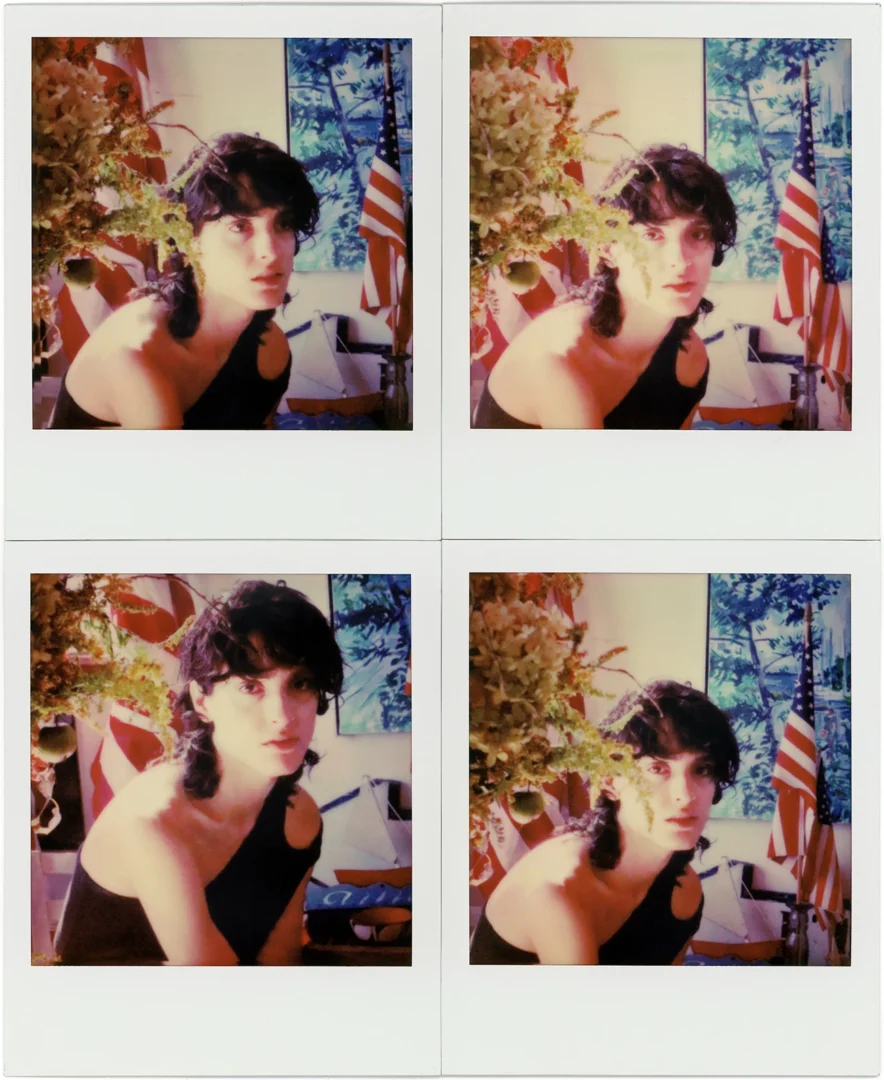
Slava Mogutin: from Russia to the US
Some were experiencing freedom in Fire Island for the first time. Russian American multimedia artist Slava Mogutin first went there in the late Nineties, around the time he was granted asylum in the USA after being exiled from Russia. At the time he was the only openly gay personality in his motherland.
He was in Fire Island to shoot a porn movie with Michael Lucas, also born in Russia. He took his first polaroids there: «It was the moment of both my sexual and artistic awakening. That place was a playground for meetings. Coming from Russia, I’ve never experienced anything like that». It was the beginning of his career as a photographer: Analog Human Studies, a retrospective book collecting his work during the decades, just came out last year.
Gio Black Peter – his body of work featured Fire Island
Artists that spent time in Fire Island documented the evolution of the gay community year after year, in a way that’s comparable to what Tom of Finland did during his career. Tom Bianchi is one of the names linked to the island. He also shot Slava Mogutin in his pictures.
«When I go there, I usually bring art supplies. I’m painting and drawing, because you usually meet a lot of people that you don’t have the chance to meet in New York», says Gio Black Peter, born in Guatemala but raised in NYC. Mostly a figurative artist, his body of work featured Fire Island. In last year’s painting Anything you ever needed is everything you’ve always had a naked man is surrounded by trees and flowers. In We can dance all day around it a bunch of men are frolicking in the sea water.
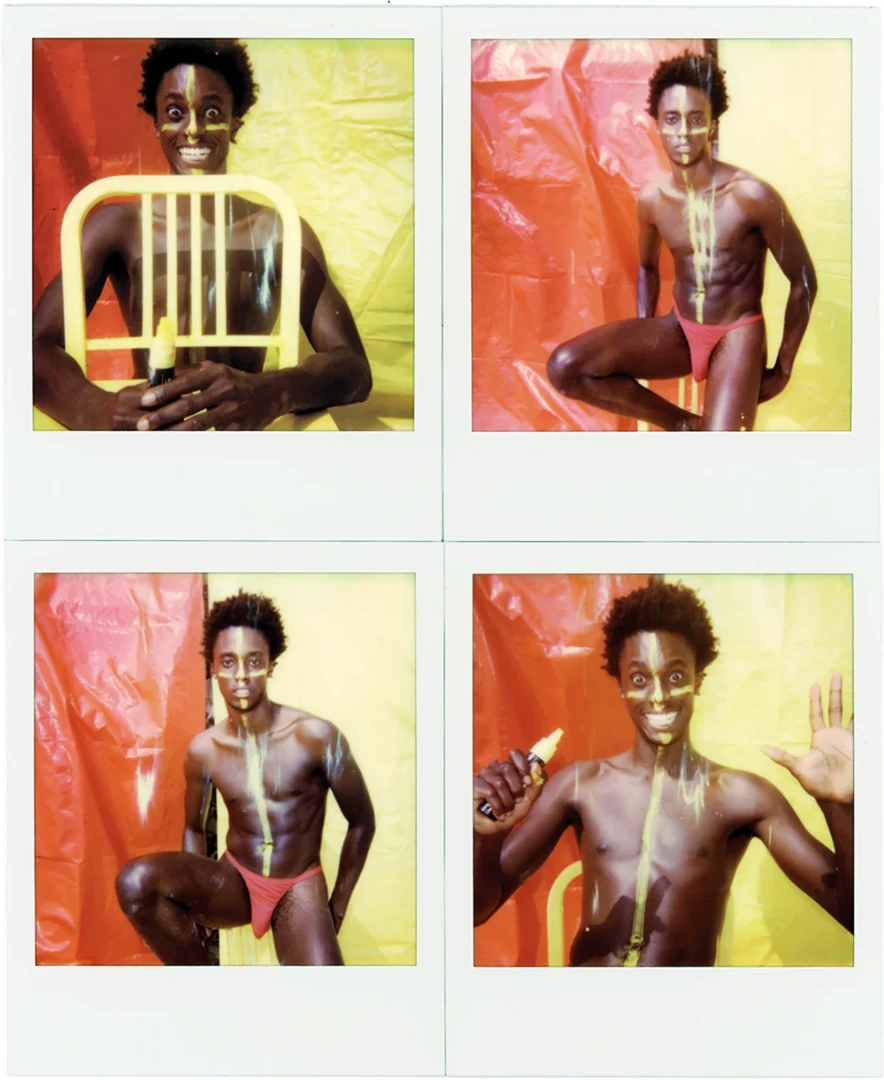
Both Gio Black Peter and Slava Mogutin recognize that all that glitters is not gold: Fire Island
Both Gio Black Peter and Slava Mogutin recognize that all that glitters is not gold: Fire Island has mostly been occupied by white, rich gay men – diversity and inclusivity are not two words that are sculpted in its history. There are no nightclubs on the island. The fun is hidden into circuit parties and orgies, hosted by a small group of landowners and their guests.
«Even being from New York, for a long time I never went to Fire Island. It had a scene and it wasn’t known for being accessible. It’s a small community. I’m talking about race and class. It has always been for wealthy faggots: the only people that were invited were the young guys they wanted to fuck. Young white guys. Being a multiracial latino queer is different. I’m not going to say it was an inclusive place, because it was not. It’s a gated community. In the beginning I remember going to parties and being the only person of color», says Black Peter, who first went there twenty years ago or so.
Fire Island: focusing on diversifying the audience and paving the way for artists of color and trans people
Things have been changing. Fire Island has opened up to minorities within the queer community. Diversity is still a mirage when it comes to house properties. Being so small, just a few houses are available. They’re still in the hands of rich white people. Members of the community have gone the extra mile to change the status quo. In 2015, nonprofit organization BOFFO celebrated its first festival in Fire Island «focusing on diversifying the audience and paving the way for artists of color and trans people». Drag events are now common, says Mogutin. He points out that «the guy I’m dating now is a black performer and we first met on Fire Island».
BaBEC – Black and Brown Equality Coalition
Gio Black Peter – who says that «there’s more art now: exhibitions and performances are happening, while before it was mostly parties» – mentions BaBEC (Black and Brown Equality Coalition) as one of the main actors driving the island towards a diverse setting. «We shouldn’t just focus on Fire Island. Look at the fashion industry: the world has opened up its eyes and realized that there aren’t just white models», he says. At the time of the Black Lives Matter movement there was a parade on the beach.
The AIDS epidemic impacted on Fire Island. Fire Island: get a ticket for a blowjob
Roughly 30% of the housing stock changed hands recently. People are noticing a shift in the demographics, washing away the few survivors of the AIDS epidemic. Mogutin recalls that last time he went there, in September 2019, «straight couples with kids were taking over the beach. It felt strange». Gio Black Peter: «I had a friend who sold his house a few years ago, because all these straight people are moving into town. They’re trying to change it. They don’t get what Fire Island is. People started getting tickets for sucking dicks in the Meat Rack, which is part of the history of the island.
What are we talking about? We always did that there, it’s a woodsy area. There are no houses in the woods. There’s more pressure to stop that kind of behavior since heterosexual families have been bringing their kids. There was never a kid before. Back in the days you could be naked on the beach wherever you wanted. Now you can only do it in certain areas. It wasn’t just the beach: the first time I went there I thought I could just be naked on the boardwalk. I did that».
For Mogutin, who calls Black Peter «a notorious nudist», the situation is ironic: «Fire Island has always been a place where porn movies were made. Now it has become more puritanical. The attitude towards nudity is not what it used to be».
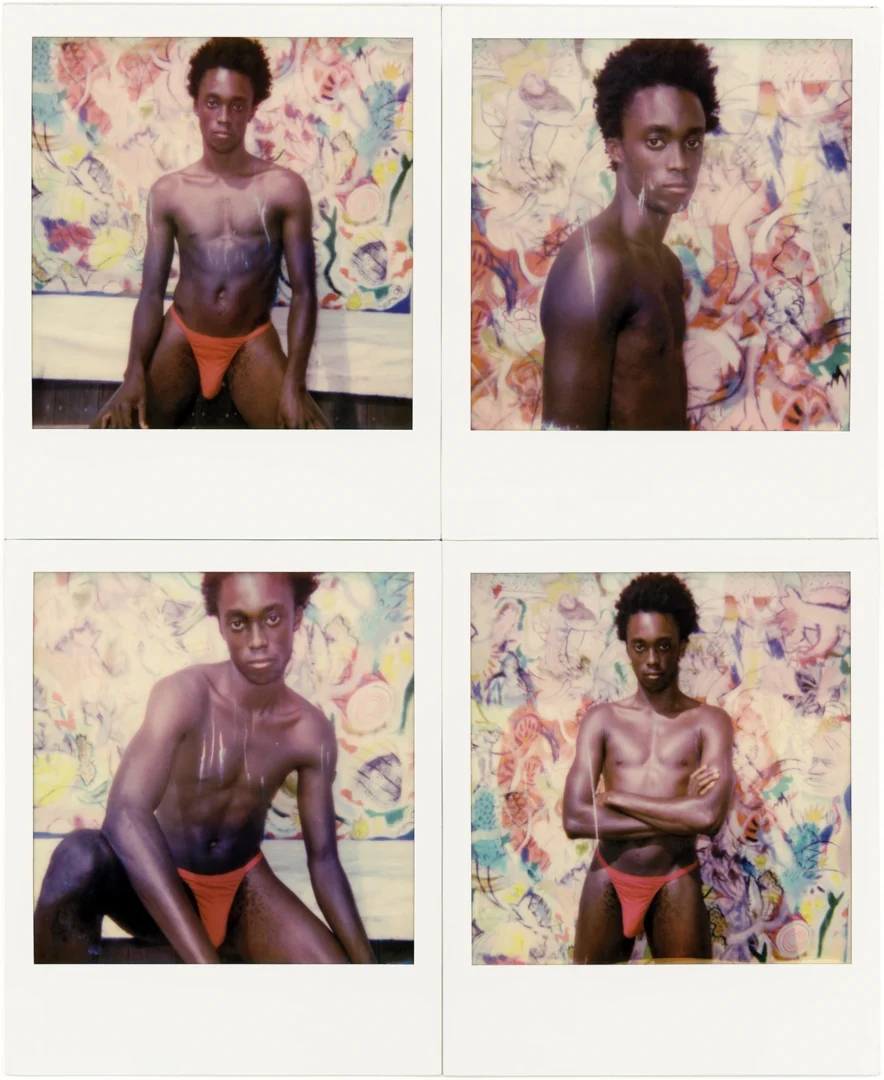
Fire Island in the Seventies. It’s summer, you’re horny
Black Peter reflects: «It’s the whole world that’s changing right? There’s less place for us to be queer in an authentic way. We’re saying yes to inclusivity – people of color and trans people – but no to straight families. The point is that they’re bringing their straight issues to the island. The issues we’ve been trying to escape for such a long time – but I still love it. I love how it developed and how it’s evolving».
The energy, he says, it’s always the same. «Last time I was there I had just watched a porn movie from the Seventies’ shot in Fire Island, Boys in the sand by Wakefield Poole. It gives you the vibe: cruising of course, but also just people excited to be with each other. When I went there I realized that the energy is still the same. It’s summer, you’re horny. You’re around other guys. You’re suddenly in this place where society has been reversed: the majority of people are queer. Still feels like the Seventies».
He details his last experience. «I went to the Belvedere Hotel for the first time, a place with a Liberacee-esque vibe. One of the bellboys took me to my room. Baseball cape, bro-y looking. Could be straight, I thought. I jumped in the shower. Ten minutes later, he came back acting like he forgot something. Then he says he just wanted to fuck. We had sex and he left. These were my first 15 minutes in the hotel. It really felt like Boys in the sand».
Fire Island and Sebastián Silva’s 2023 movie Rotting under the sun
Mogutin is a little less romantic in his vision. He highlights the fact that there are new places that are becoming what Fire Island was in the past. Zipolite in Mexico, as seen in Sebastián Silva’s 2023 movie Rotting under the sun, would be the best example: «It is a lot cheaper and there’s more of a sense of freedom nowadays. If I had to choose between Zipolite and Fire Island I’d go to Zipolite». For him, what spoiled the island were the circuits of rich people who are still in charge.
«Architect Charles Renfro, who is a dear friend of mine, and Wolfgang Tillmans are bad examples. For the most part the new crowd is just people working in finance and real estate. They just go there to fuck around. They don’t care about history. It’s just about parties, sex and drugs».
Slava Mogutin
Slava Mogutin – full name Yaroslav Yurievich Mogutin, b. April 12, 1974, Kemerovo – is a New York-based Russian artist and author, who works across different media, including photography, video, text, installation, sculpture, and painting.
Gio Black Peter
Gio Black Peter, born Giovanni Paolo Andrade Guevara in Guatemala in 1979, is a New York City-based actor, musical performer, and visual artist. As a visual artist, Gio Black Peter is known for his figurative and provocative paintings. His work was exhibited at the 30th International Festival of Fashion and Photography in Hyères, Galerie L’axolotl in Toulon, France, Galerei S.E. in Bergen, Norway, the Munch Gallery, and Casa de Costa in New York City.
Giacomo Cadeddu
